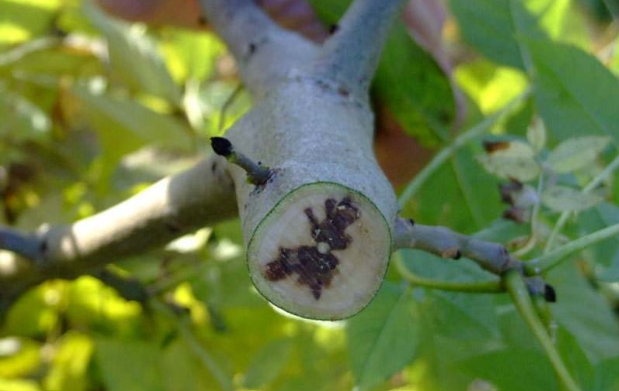Ash Dieback disease has become a significant concern for individuals and organisations striving to maintain the health of trees in their local environment.
This is due to the fact that this fungus is one of the most formidable threats to plants, causing severe damage as it spreads. Trees lose nutrients and, in many cases, die as a result of infection.
The disease can affect various hosts, making it highly contagious among plantations. Unfortunately, many people are unaware of what Ash Dieback entails and how to address it effectively to prevent the widespread loss of trees worldwide.
If you’re one of those looking for answers, worry not. We’ve prepared a comprehensive guide to clear up any doubts about Ash Dieback disease and provide actionable steps to mitigate this issue.

How Can You Identify Ash Dieback in a Tree?
Ash Dieback disease can manifest in different ways, affecting both mature trees and young saplings. Symptoms depend on the part of the tree infected and the presence of specific biotic agents.
The disease might only affect one part of the tree or spread across multiple sections. Key symptoms to identify Ash Dieback include:
- Delayed growth;
- Leaf death;
- Reduced vigour;
- Abnormal colouring;
- Bark necrosis;
- Wilting shoots;
- Wood discolouration;
- Cankers.
These symptoms are typically noticeable in spring and summer. To confirm the disease, a sample of the fungus should be collected and analysed in a laboratory for an accurate diagnosis.
Once identified, appropriate treatment can be administered, allowing affected trees the chance to recover over time.
How Is Ash Dieback Spread?
The primary mode of infection is through young tissues, especially leaves, leading to the progressive death of shoots and branches.
In some cases, the fungus originates from the tree’s base or aerial roots, suggesting that it can penetrate plants directly through their bark.
The sexually reproductive form of the fungus (Hymenoscyphus pseudoalbidus) spreads through ascospores, which are released by infected plants. This typically occurs in the early morning during the summer and autumn months.
Fungal fruiting bodies resemble tiny cup-shaped mushrooms that grow on fallen leaves, buds, and woody parts of the stems.
Can an Infected Tree Be Cured of Ash Dieback?
Yes, treatment options are available to help infected trees regain their health.
First, trees showing signs of infection should be prioritised for pruning, and the resulting wood must be quickly removed in small quantities. This reduces the fungal inoculum and minimises the risk of further contamination.
Does the Fungus Spread Rapidly?
A common question is whether the fungus spreads quickly among trees and plants. The answer varies.
The rate of spread depends on the host species and the origin of the disease. At the first signs of infection, it’s crucial to prune the affected areas to prevent rapid progression. Once the fungus penetrates a large portion of the tree’s inner tissue, reversal becomes difficult.
For this reason, prevention is the best approach to safeguard trees from this destructive fungus.

How to Prevent Ash Dieback Disease
To preserve trees and protect global forest ecosystems, understanding how to prevent Ash Dieback is essential.
Although no chemical treatments exist for this disease, preventative measures can help reduce the likelihood of infection:
- Avoid deep cuts on trees and prune them as late as possible, ideally in early spring, to minimise exposure to the fungus.
- Protect existing wounds on trees to prevent fungal penetration into vascular tissues.
- Keep soil well-fertilised to maintain tree vitality, ensuring they are strong enough to combat the fungus if necessary.
By taking these steps, we can create a robust defence against Ash Dieback disease, reducing its impact on forests and preserving the invaluable benefits trees provide to the planet.


